Merrill Webb is a bird specialist extraordinaire who has developed a vast knowledge of many bids, especially those in Utah. What started out as a hobby for him has become part of a life-long career. For every tweet, chirp, song, or call, he tries to identify the bird. He is especially well-acquainted with the bird species he observes on or around Utah Lake.
Intrigued by Utah Lake’s varied habitats, Merrill enjoys watching the wide variety of birds, which include waterfowl, shorebirds, song birds, and raptors. “There are different bird species during the different seasons of the year,” he states. “There are the resident birds that nest around the edges of the lake, and then there are the seasonal migrants that pass through on a regular basis in the spring and in the fall. There are a few birds that show up only during the winter, for example, the Bald Eagle.” For many years, he has observed the nesting habits, the mating behavior, and as mentioned, the seasonal migrations of the various species of birds around the lake for many years.
Merrill became interested in bird watching when he was a teenager. At about age 15, his parents purchased for him a field guide to the birds of the United States. A pair of binoculars followed. And the “nest” is history – he has been watching birds for more than 50 years. As he was growing up in southern Utah, bird watching was considered the domain of “little old ladies in tennis shoes,” so he kept a low profile until he enrolled in an ornithology class at Dixie College as a freshman. Since then, it has been rewarding for him to witness the dramatic increase in birding activities among the general populace, especially in the last decade. Asked why he has continued this hobby for so long, he said, “Because it is relaxing, challenging, and educational. Besides, you can watch birds wherever you are and it doesn’t take a lot of money to do.” If he sees a bird he doesn’t recognize, or can’t identify, he researches to find the answer. This is when birding becomes a rewarding and satisfying endeavor for him.
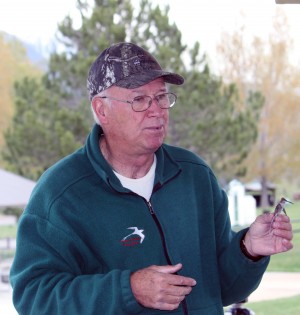 When he teaches an audience how to identify birds, it is based on his knowledge of a bird’s field marks (size, coloration, habitat, and behavior, for example). He also emphasizes the importance of listening to the sounds birds make. He says, “Ninety percent of identification of birds for me is based on their song or calls. So, it is important to really learn how to listen.” He documents birds he sees throughout the state by marking on a checklist he carries with him when and where he saw them. Then, these observations are submitted to a national database called eBird. Documentation of rare birds is done by submitting a written description of the bird to the Utah Rare Birds Committee for approval or rejection.
When he teaches an audience how to identify birds, it is based on his knowledge of a bird’s field marks (size, coloration, habitat, and behavior, for example). He also emphasizes the importance of listening to the sounds birds make. He says, “Ninety percent of identification of birds for me is based on their song or calls. So, it is important to really learn how to listen.” He documents birds he sees throughout the state by marking on a checklist he carries with him when and where he saw them. Then, these observations are submitted to a national database called eBird. Documentation of rare birds is done by submitting a written description of the bird to the Utah Rare Birds Committee for approval or rejection.
While doing his student-teaching at Orem High School in the spring of 1967, his cooperating teacher, Mr. Al Davis, found out that Merrill was good at identifying birds. So he requested Merrill take him out to Utah Lake and teach him what to look for. They went out to Powell Slough three or four times where they observed an interesting variety of birds including waterfowl, shorebirds, and many different kinds of songbirds. “Al had a thirst for knowledge, and he enjoyed learning about new things that had to do with science,” Merrill said. “I was pleased I had the opportunity to help my mentor learn some skills that enhanced his teaching of biology.”
After graduating from B.Y.U. with a Bachelor’s degree in zoology, Merrill was hired to teach biology and zoology at Provo High School. During his tenure there, he would take his zoology students down to Utah Lake during spring migration to bird watch. His principal, Mr. Ron Last, was very supportive of the field trips. “We had very little money for field trips, so I would either take them in my van down to the lake, or make arrangements to meet them at a certain time and place, and they would drive down in their own cars. They learned a lot about the ecology of the lake while they were honing their bird identification skills. They also learned Utah Lake is an important resting area for migrating birds and the wetlands around the lake provided important nesting habitat for them.
In 2001, after teaching the life sciences for 31 years at Provo High School, Merill retired and went to BYU where he taught Human Biology and worked with student teachers for two years. In 2005, he accepted a teaching position at the Utah County Academy of Sciences (UCAS), a charter school on the UVU campus, where he taught College Biology to high school juniors for six years before retiring in 2011. Each spring he took his UCAS students to either Farmington Bay, WMA, or the Bear River Bird Refuge to study wetland ecology and to observe the concentrations of migrating and nesting waterfowl and shorebirds. Again, he had a very supportive principal, Mr. Clark Baron, who somehow managed to find ways to finance the fieldtrips. For this reason, Merrill is hopeful that a Nature Center can be developed on the shores of Utah Lake to alleviate the expense and travel time of taking students north to see some of the same birds we can observe here.
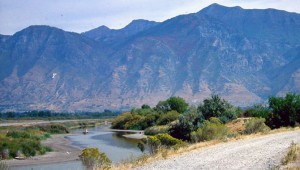
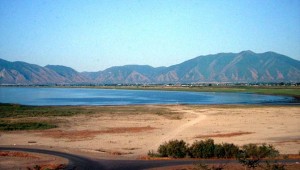
Merrill has documented more than 150 bird species around the Lake. He lists his favorite viewing locations on the road on the dike around Provo airport, Powell Slough, the area near where the Spanish Fork River enters the lake, Utah Lake State Park, and Lincoln Beach.
Merrill is a “Lister.” In birding vernacular, this means he keeps lists of birds he sees on every birding trip he takes. He keeps monthly, yearly, and county lists as well as state and country lists. In terms of the number of bird species seen by birders in the state of Utah, Merrill is in the top ten. Based on his knowledge of birds in the state he has created checklists for other birders to know what to expect when they visit certain areas. These checklists are for the birds of Strawberry Valley, the birds of Utah County, and he has helped with developing the Utah State Bird List.
For eighteen summers, Merrill worked for the Uintah National Forest doing breeding bird surveys. “This was a chance to survey forest habitats in the counties of Tooele, Wasatch, Juab, and Utah,” he said. “It involved walking or driving a two-mile route on 48 different transects in the forest and recording every bird I saw and heard.” He has also done five breeding bird surveys for the USGS. Each of these has 50 stops along a 24.5 mile route. There are currently more than 4,000 such transects in North America. When these transects are replicated year after year, trends appear in the local avifauna and this information can be used to show which species are declining, stable, and increasing.
In addition to his listing submissions and survey data, Merrill also is a contributor to the Utah Lake Commission fourth grade field trips held for the past three years in the spring. He has also served as a volunteer at the Diamond Fork Canyon Youth Forest where he has helped elementary students from the Nebo School District learn about birds. Merrill has also taught classes and led field trips for the Great Salt Lake Bird Festival and the St. George Winter Bird Festival.
In the 1970s, he helped organize the Mt. Timpanogos chapter of the National Audubon Society in Utah County and later served as the president. He is also the past president of the Utah Ornithological Society and the Utah County Birders Association.
“What started out as a hobby 50 years ago has become a lifelong learning experience that has been rewarding and very satisfying,” he said. “I hope the next 50 years can be just as productive.”
Merrill was born in St. George, Utah. His father was a dairy farmer and Merrill was introduced to the “pleasures” of baling and hauling hay, milking cows, irrigating, and doing all things involved with agriculture. From his childhood, he has had an interest in animals. . He has earned his Bachelor’s and Master’s degrees from BYU. Lynnette, his wife, and he have four children: April Williams, Melanie Webb, Lindy Overton, and Tyler Webb, and seven grandchildren. He continues to travel throughout the state and share his expertise and knowledge with people who show an interest in birds and want to become a “birder.”
Photos Courtesy: Utah Lake Commission
Landscape birding sites courtesy of Merrill Webb.
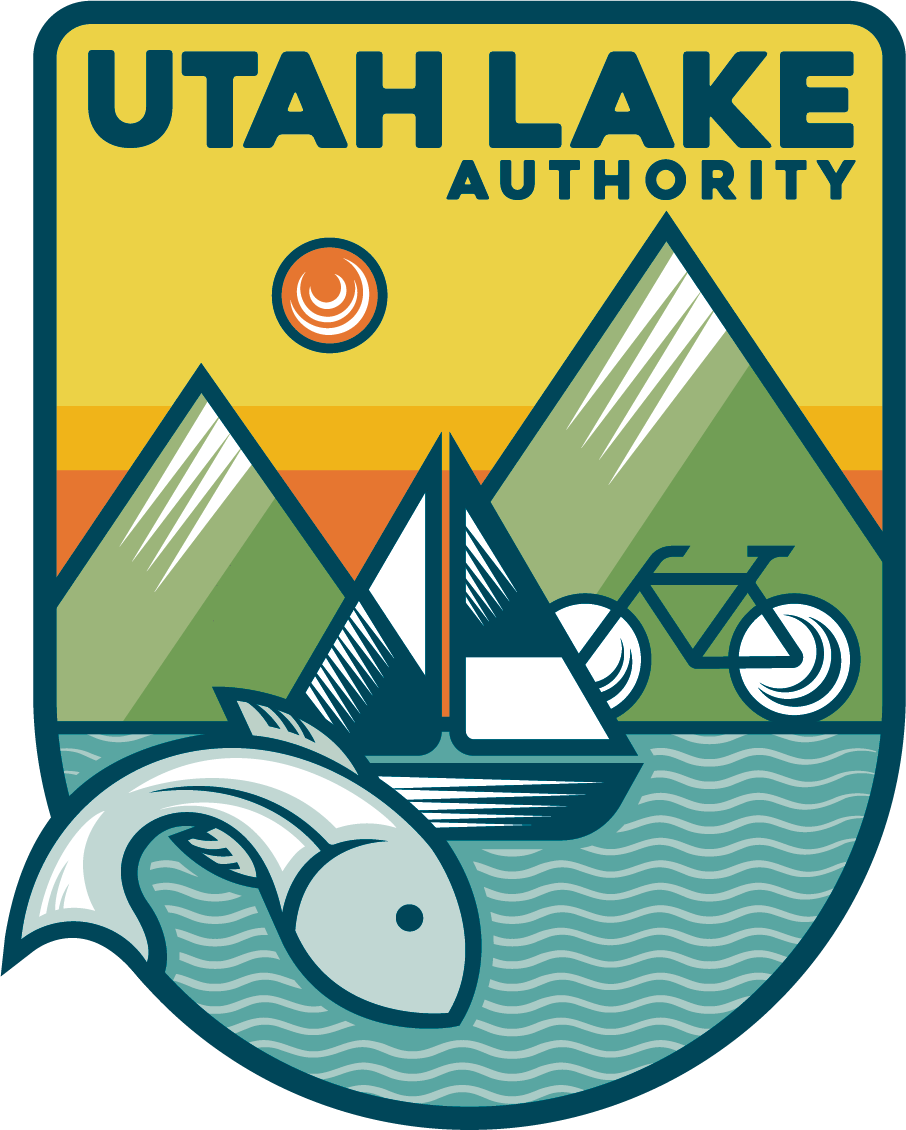

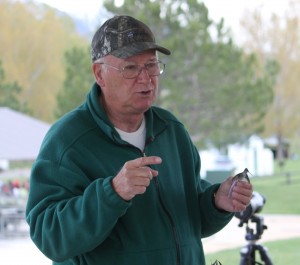
I count my own birding interest to have begun with Merrill Webb. He is an outstanding teacher and has been so generous with his time in the community. I’m so glad to see this article praising him. Thank you.
Please contact me. I have a bird photo that I need identified. At first I thought it was a Bald Eagle but it has white leg feathers all the way down. It has a very large wing span in comparison to the crow that was following it. Probably at least 5 feet from tip to tip. I only just got a glimpse of it in the air before it landed in the tree. How do I post the photo of it?
Unfortunately we are unable to post your photo. We hope you were able to identify the bird. There should be some helpful websites available to help with bird identification.
Love Mr. Webb, one of the finest teachers I had the pleasure of learning from 🙂